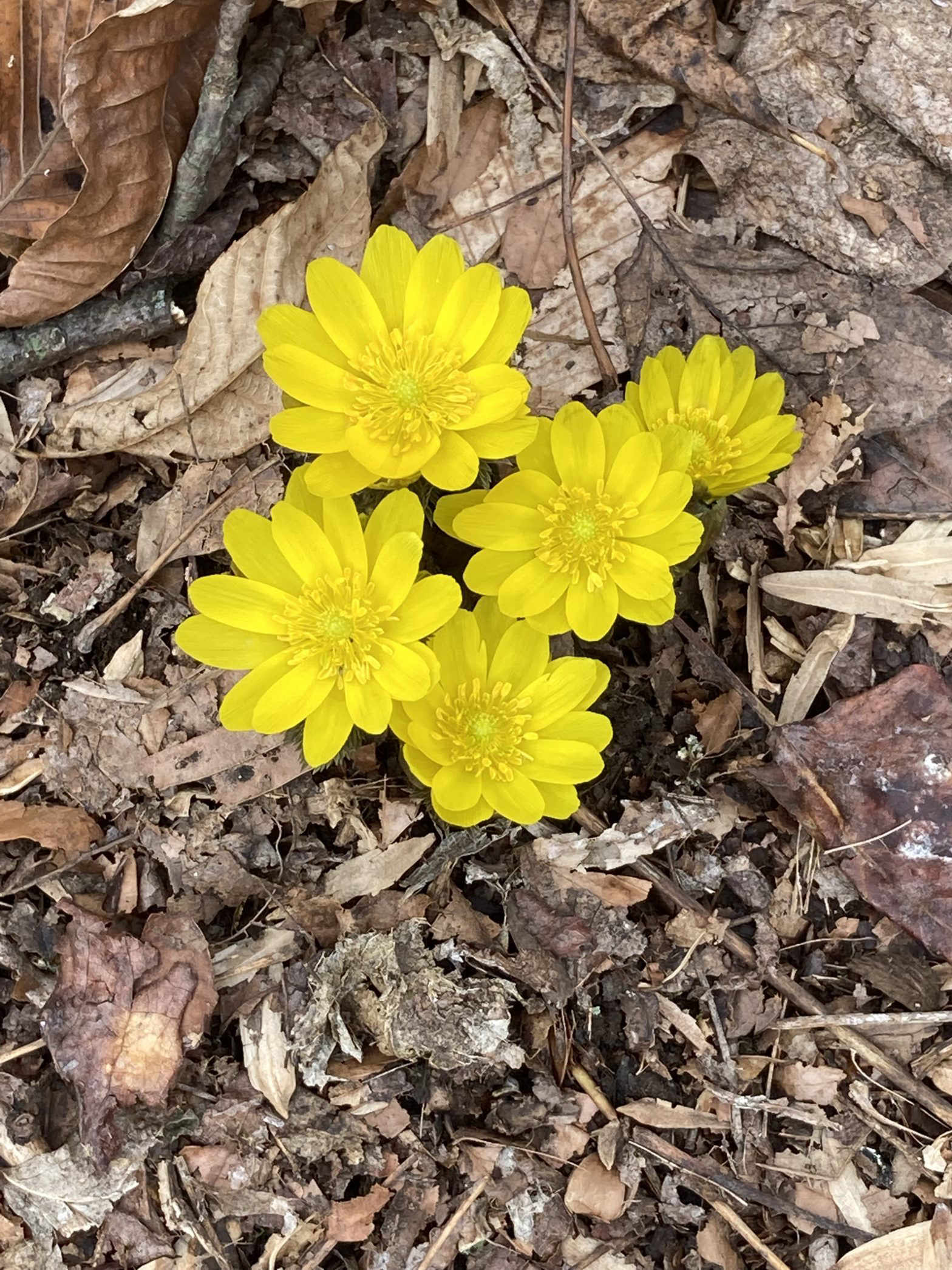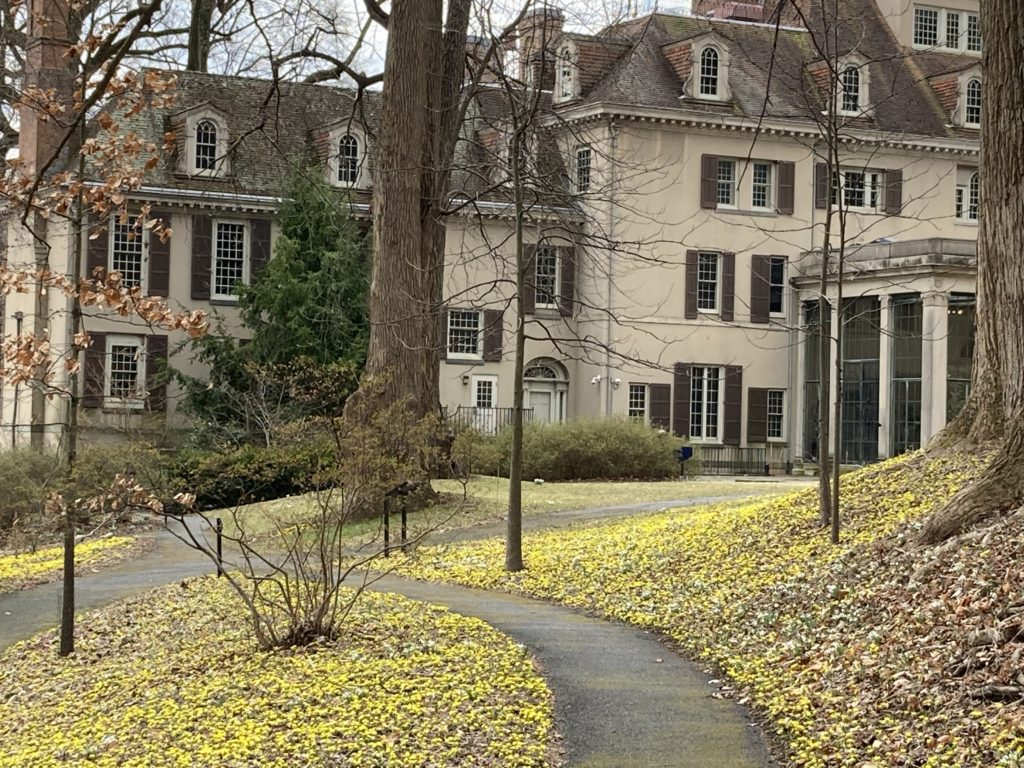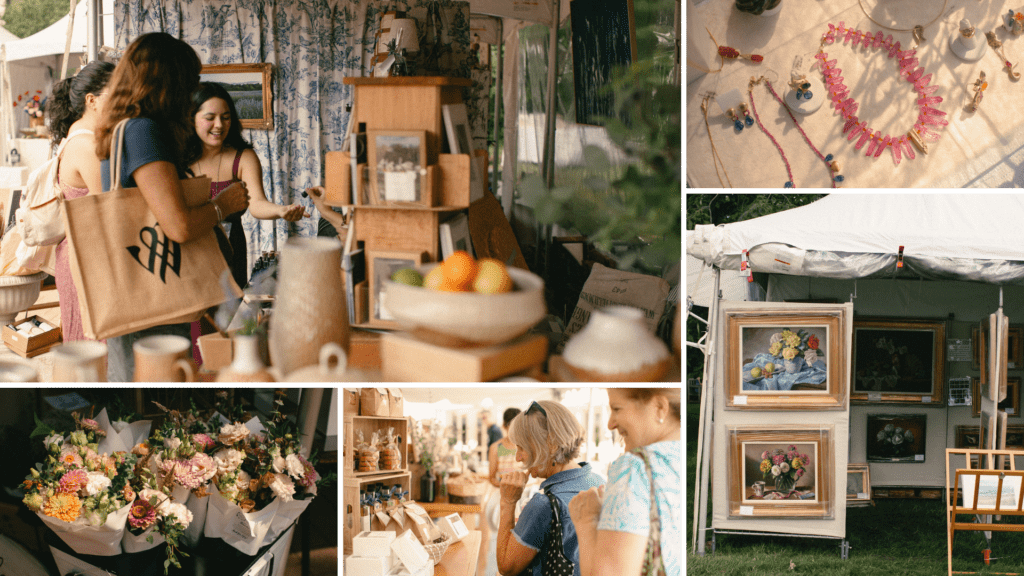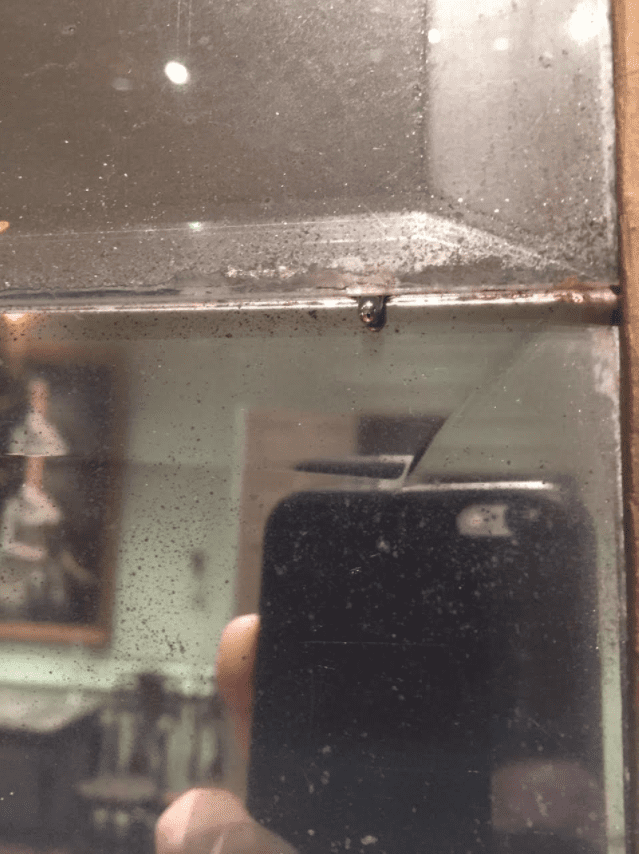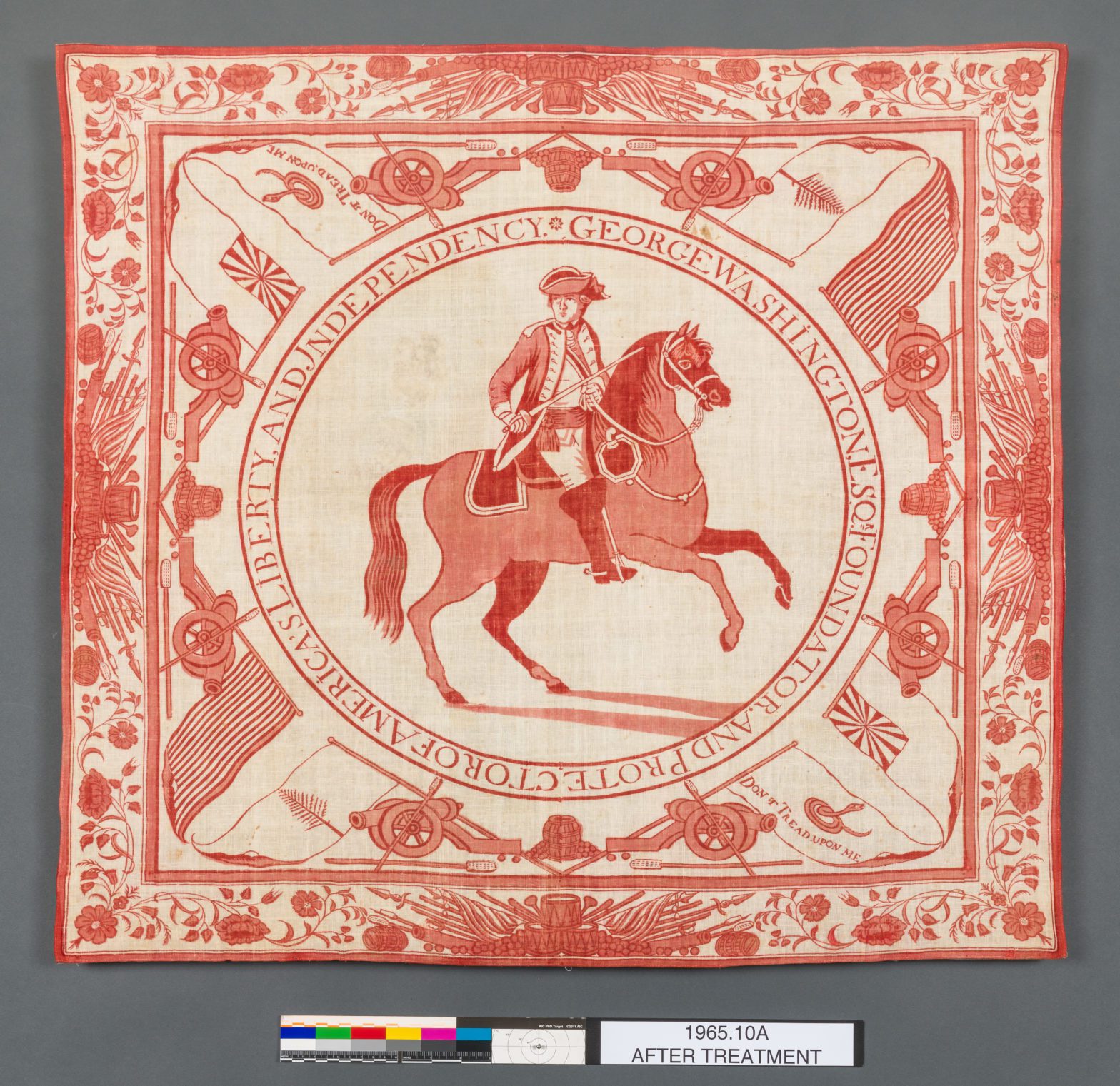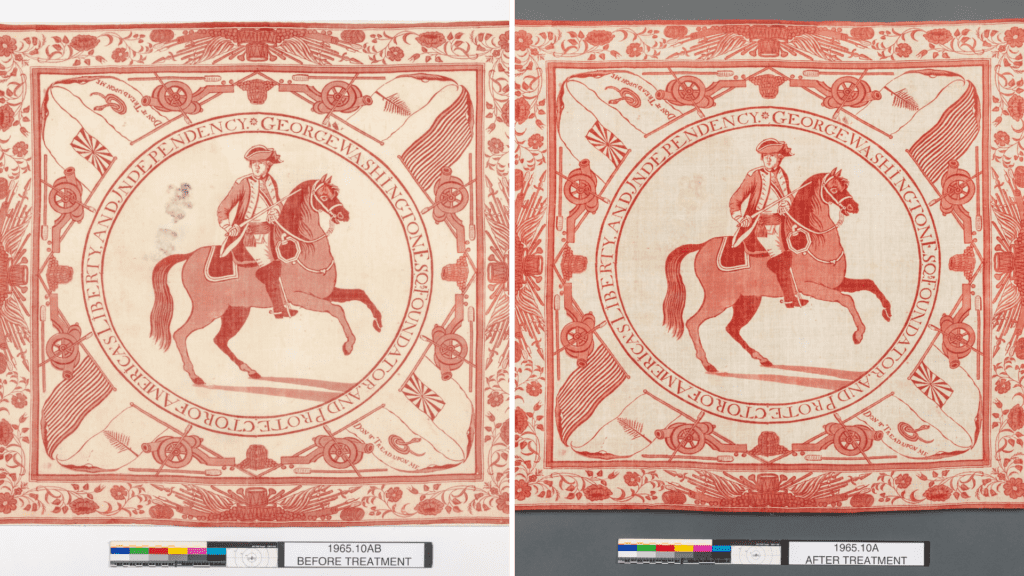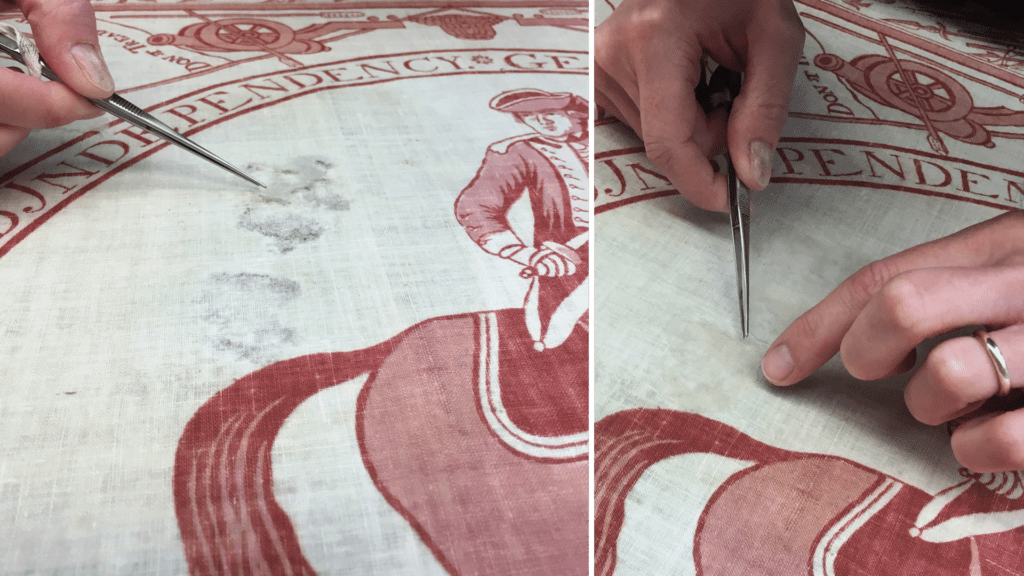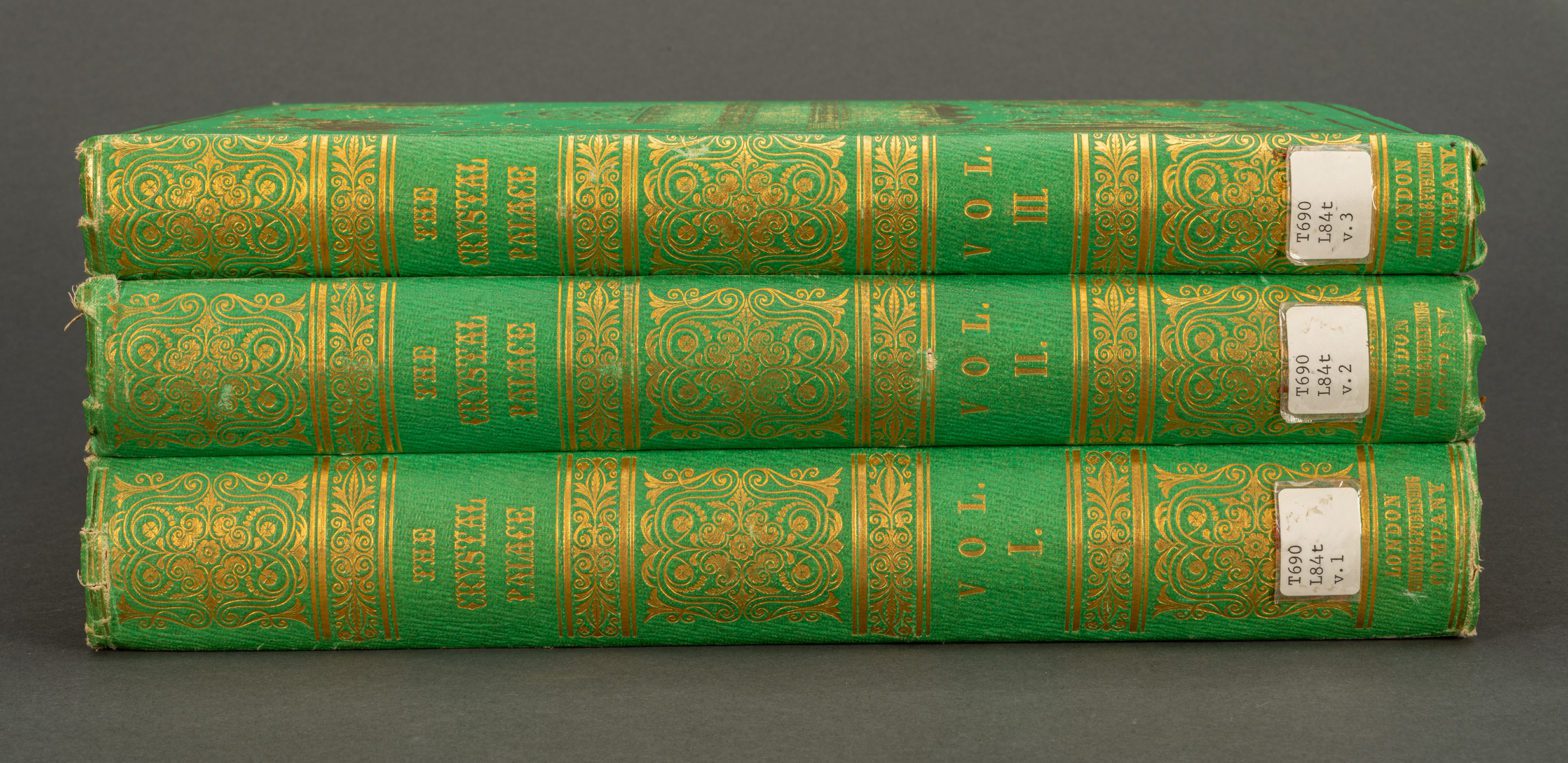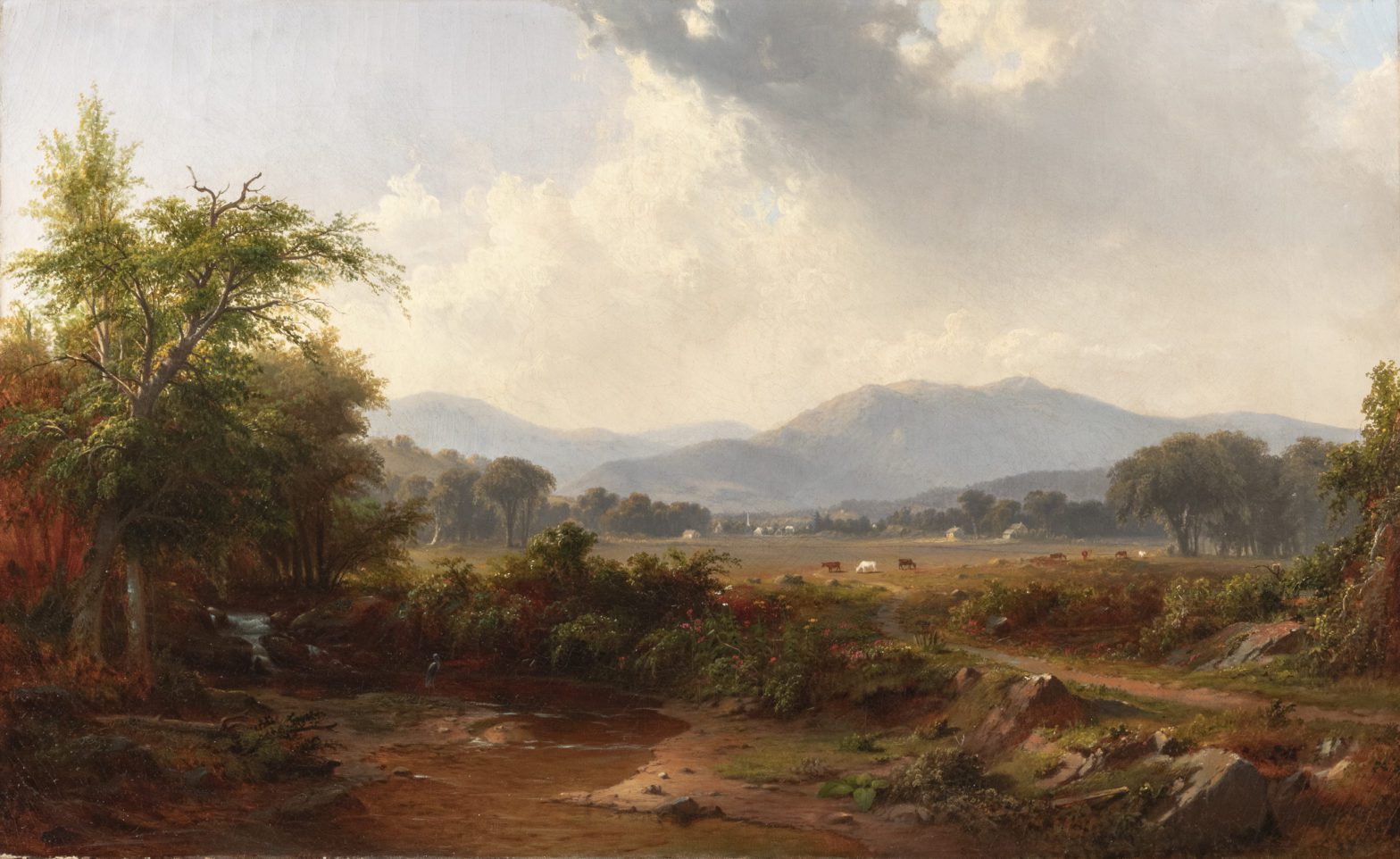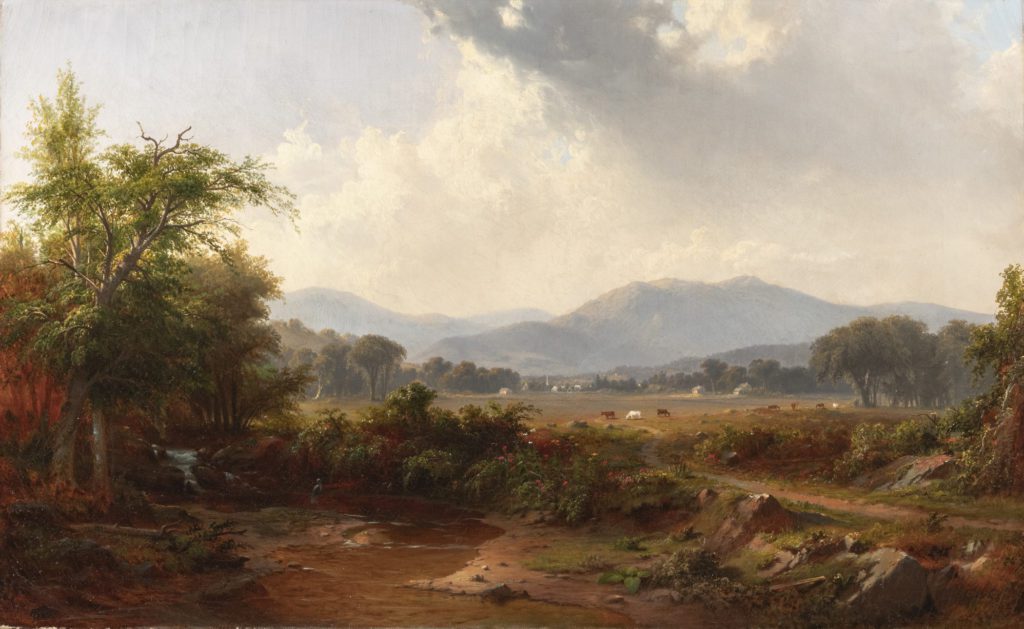Bloom Report #07
February 16, 2022
45 F, Sunny
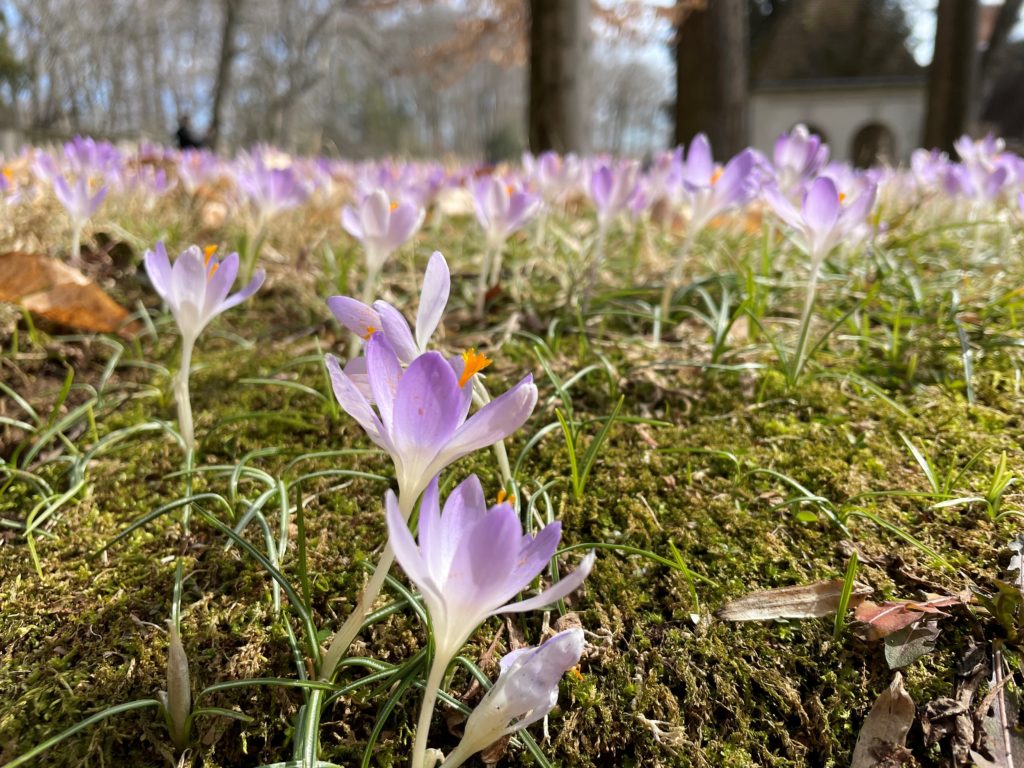
photograph taken by Collin Hadsell
Check these out:
- Tommies: The ‘Tommies’ (Crocus tommasinianus) are starting their display in the lawn of the East Upper Terrace of the Museum.
- Snowdrops: Snowdrops (Galanthus species and varieties) are in bud or in bloom throughout the gardens. Blooms can be seen along the March Walk, in the Boxwood Garden on the East Upper Terrace of the Museum, and in the raised bed in the Museum east courtyard.
- Winter color: The willow-leaf cotoneaster (Cotoneaster salicifolia) has brilliant red berries and dark purple leaves for a great show of color in winter.
- Furry ‘winter coats’: The buds of the magnolias at Magnolia Bend and in the Sundial Garden are covered by fuzzy bud scales. The hairs that create the furry look are called trichomes.
ENTRANCE DRIVE AND PARKING AREA
ber Catalpa species (Catalpa – long, bean-like brown seed pods)
pb Hydrangea paniculata ‘Grandiflora’ (Pee Gee hydrangea – brown)
LAGOONS
ber Celastrus scandens (American bittersweet – yellow husks, orange berries)
SUMMER SHRUB SLOPE
pb Hydrangea paniculata ‘Grandiflora’ (Pee Gee hydrangea – brown)
PARKING AREA TO VISITOR CENTER
b Galanthus species (Snowdrop – white)
WALK FROM VISITOR CENTER TO UNDERPASS
fbb Galanthus elwesii (Giant snowdrop – white)
fb Hamamelis vernalis (Vernal witch hazel – rusty gold ‘ribbons’)
fb Hamamelis mollis ‘Pallida’ (Pale Chinese witch hazel – yellow ‘ribbons’)
fb Hamamelis ‘Wisley Supreme’ (Chinese witch hazel variety – yellow ‘ribbons’)
WALK FROM UNDERPASS TO MUSHROOM
b Eranthis hyemalis (Winter aconite – yellow)
b Galanthus elwesii (Giant snowdrop – white)
SLOPE DOWN TOWARDS MUSEUM
b Eranthis hyemalis (Winter aconite – yellow)
PEONY GARDEN
b Crocus tommasinianus (‘Tommies’ – lavender and silver – along lower end of walkway)
pf Galanthus ‘Faringdon Double’ (Snowdrop variety – white – along walkway at end of Brown Center)
b Galanthus species (Snowdrop – white)
AZALEA WOODS
b Eranthis hyemalis (Winter aconite – yellow)
b Galanthus elwesii (Giant snowdrop – white)
pb Hydrangea arborescens (Smooth hydrangea – brown)
LOWER AZALEA WOODS
b Eranthis hyemalis (Winter aconite – yellow)
b Galanthus species (Snowdrop – white)
UPPER/EAST TERRACE AND STEPS
fbb Camellia variety (Camellia variety – pink-tinged buds)
b,+ Crocus tommasinianus (‘Tommies’ – lavender and silver)
b Galanthus ‘Alan’s Treat’ (Snowdrop variety – white – 1 bud)
fbb Galanthus ‘E.A. Bowles’ (Snowdrop variety – white)
fbb Galanthus ‘Gloria’ (Snowdrop variety – white – 1 bud)
fb Galanthus ‘Louise Ann Bromley’ (Snowdrop variety – white)
fb Galanthus ‘Madelaine’ (Snowdrop variety – white)
fb Galanthus ‘Phantom’ (Snowdrop variety – white)
pf Galanthus ‘Potter’s Prelude’ (Snowdrop variety – white)
fb Galanthus ‘Puck’ (Snowdrop variety – white)
fb Galanthus ‘Starling’ (Snowdrop variety – white)
fb Galanthus ‘Trymlet’ (Snowdrop variety – white)
fb Galanthus ‘Wasp’ (Snowdrop variety – white)
fbb Galanthus ‘Yashmak’ (Snowdrop variety – white)
b Jasminum nudiflorum (Winter jasmine – yellow)
fbb Lonicera fragrantissima (Fragrant honeysuckle – white)
fbb Pieris japonica ‘Dorothy Wycoff’ (Andromeda cultivar – rosy pink buds)
EAST FRONT OF MUSEUM & Around Corner
fb Galanthus ‘Castlegar’ (Snowdrop variety – white)
fbb Galanthus ‘Cowhouse Green’ (Snowdrop variety – white)
fb Galanthus elwesii ‘Green Brush’ (Giant snowdrop variety – white)
fb Galanthus elwesii ‘Grumpy’ (Giant snowdrop variety – white)
fb Galanthus elwesii ‘Natalie Garton’ (Giant snowdrop variety – white)
b Galanthus elwesii var. monostichtus (Giant snowdrop variety – white)
fb Galanthus ‘Fieldgate Prelude’ (Snowdrop variety – white)
fb Galanthus ‘Fieldgate Superb’ (Snowdrop variety – white)
pf Galanthus ‘Gabriel’ (Snowdrop variety – white)
fb Galanthus ‘Galatea’ (Snowdrop variety – white)
fb Galanthus ‘George Elwes’ (Snowdrop variety – white)
fb Galanthus ‘Imbolc’ (Snowdrop variety – white)
fb Galanthus ‘John Gray’ (Snowdrop variety – white)
fb Galanthus ‘Mrs. Thompson’ (Snowdrop variety – white)
fb Galanthus ‘Mrs. Wrighton’s Double’ (Snowdrop variety – white – 1 flower)
b Galanthus species (Snowdrop – white – behind Bath House)
b Galanthus nivalis ‘Elfin’ (Common snowdrop cultivar – white)
fb Galanthus plicatus ‘Diggory’ (Snowdrop variety – white)
b Galanthus plicatus ‘Percy Picton’ (Snowdrop variety – white)
fbb Galanthus samothracus (Aegean snowdrop – white)
b Helleborus ‘Brandywine’ (Lenten rose varieties – pink, white)
ber Ilex opaca (American holly – red berries – behind Bath House)
fbb Lonicera fragrantissima (Fragrant honeysuckle – white – along Garden Lane across from Bath House)
WALK FROM GLASS CORRIDOR TO REFLECTING POOL
b Crocus tommasinianus (‘Tommies’ – lavender and silver)
b Eranthis hyemalis (Winter aconite – yellow)
fb Galanthus elwesii (Giant snowdrop – white)
fbb Galanthus nivalis (Common snowdrop – white)
pb Hydrangea paniculata ‘Tardiva’ (Panicle hydrangea cultivar – brown)
WALK FROM FISH PONDS – THE GLADE – TO BRIDGE
b Eranthis hyemalis (Winter aconite – yellow)
b Galanthus nivalis (Common snowdrop – white)
fb Galanthus species (Snowdrop – white)
pb Hydrangea arborescens (Smooth hydrangea – brown)
b Leucojum vernum (Spring snowflake – white ‘bells’)
MARCH BANK
b Adonis amurensis (Amur adonis – golden yellow)
b Eranthis hyemalis (Winter aconite – yellow)
b,+ Galanthus elwesii (Giant snowdrop – white)
fbb Galanthus nivalis (Common snowdrop – white)
MAGNOLIA BEND AND WALK ON SOUTH SIDE OF STREAM
b Galanthus elwesii (Giant snowdrop – white)
pb Hydrangea arborescens (Smooth hydrangea – brown)
pb Hydrangea quercifolia (Oak leaf hydrangea – brown)
GARDEN LANE
ber Crataegus viridis (Green hawthorn – red berries – few left)
ber Koelreuteria paniculata (Golden rain tree – brown seed pods)
fbb Viburnum farreri (Fragrant viburnum – pale pink to white)
ICEWELL TERRACE
b Galanthus plicatus ‘Trymposter’ (Snowdrop variety – white)
fb Galanthus plicatus variety (Snowdrop variety – white)
b Galanthus species (Snowdrop – white)
ENCHANTED WOODS
b Eranthis hyemalis (Winter aconite – yellow)
fb Galanthus elwesii (Giant snowdrop – white)
b Galanthus species (Snowdrop – white)
pf Hamamelis virginiana (American witch hazel – yellow ‘ribbons’)
pb Hydrangea arborescens ‘Annabelle’ (Smooth hydrangea – brown)
pb Hydrangea arborescens ‘Grandiflora’ ‘Hills of Snow’ (Smooth hydrangea – brown)
pb Hydrangea quercifolia (Oakleaf hydrangea – brown)
OAK HILL–East Side
b Eranthis hyemalis (Winter aconite – yellow)
fb Galanthus elwesii (Giant snowdrop – white)
b Galanthus nivalis (Common snowdrop – white)
QUARRY, ADJACENT WALKS, AND OUTLET STREAM
b Galanthus species (Snowdrop – white)
fbb Mahonia bealei (Leatherleaf mahonia – green to brown buds)
fbb Pieris ‘Forest Flame’ (Andromeda variety – dark rosy-pink buds)
SYCAMORE HILL
ber Catalpa species (Catalpa – long, bean-like brown seed pods)
ber Cotoneaster salicifolia (Cotoneaster – bright red berries)
fb Galanthus elwesii (Giant snowdrop – white)
WEST FRONT OF MUSEUM, COTTAGE, AND CLENNY RUN
fb Chimonanthus praecox ‘Lutea’ (Wintersweet variety – pale yellow)
fb Galanthus elwesii (Giant snowdrop – white)
pb Hydrangea arborescens (Smooth hydrangea – brown)
pb Hydrangea quercifolia (Oakleaf hydrangea – brown)
GREENHOUSE AREA
fbb Galanthus woronowii (Snowdrop – white)
GARDEN LANE MEADOW – below Brown’s Woods
ber Catalpa species (Catalpa – long, bean-like brown seed pods)
Bloom Report presented by: Pauline Myers

